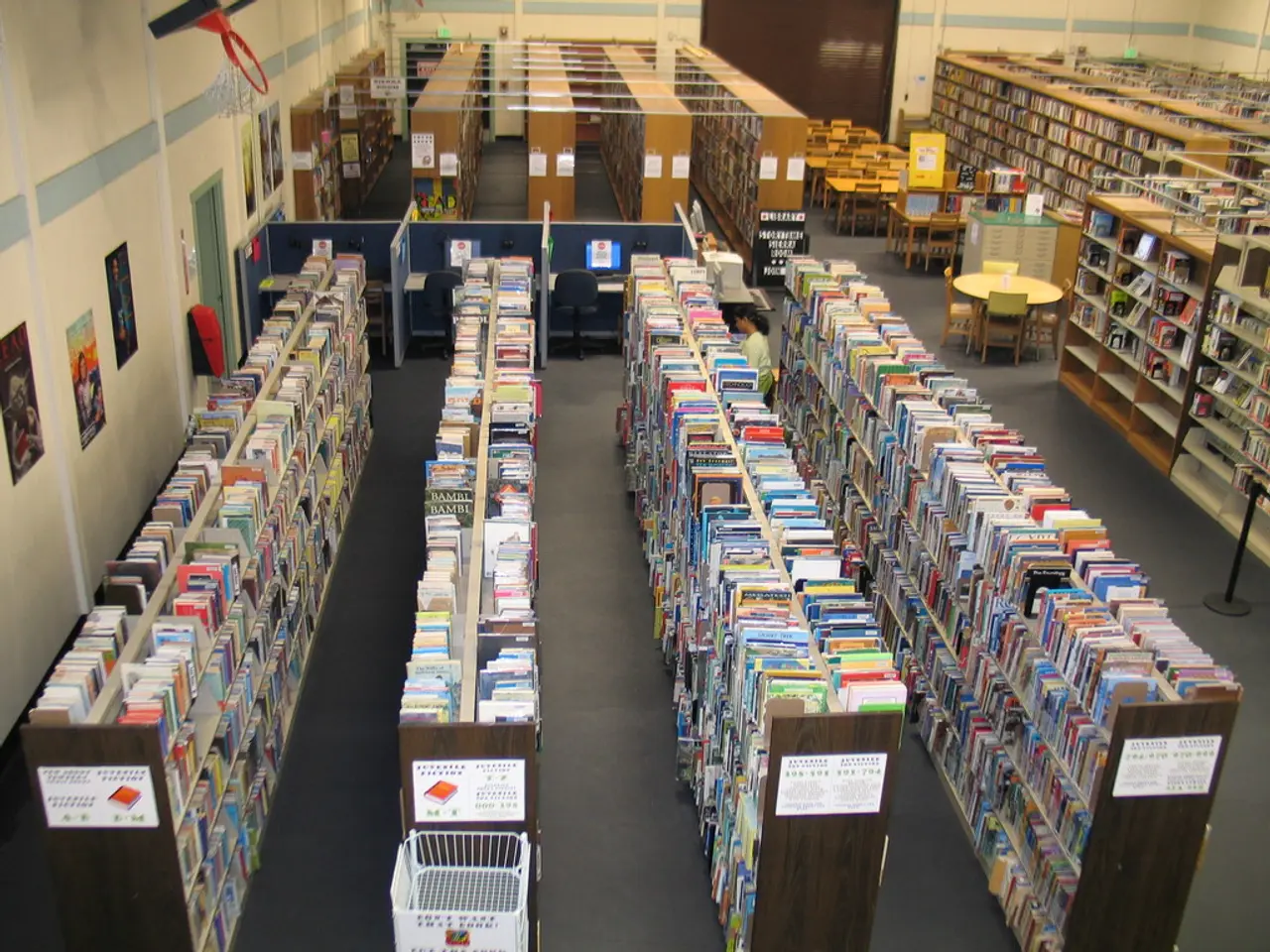A Guide to Understanding Lending Libraries: A Breakdown
In the heart of Oxford, England, the Oxford Library of Things resides in a utility room-sized corner of Aristotle House, an events space populated by social enterprises. This community sharing library is just one example of a growing movement that is revolutionizing the way we consume goods.
The Lending Library concept, also known as a Sharing Library, encourages a borrowing culture by offering a repository of diverse items that can be temporarily borrowed by signed-up members. The stock of a Lending Library can vary greatly, offering a unique selection of products. The inventory of a Lending Library should be determined by the target audience, ensuring it caters to the needs of the community it serves.
Lending Libraries operate from a centralized location, have regular opening hours, a tracking and booking system for the inventory, and often membership fees. However, some Lending Libraries, like the one in Devon, offer free membership to low-income households.
These libraries contribute to both the sharing economy and the circular economy by reducing demand for new products, extending the lifespan of items, and minimizing waste. The sharing economy, which includes Lending Libraries, is valued at over $366 billion USD in 2024 and is projected to reach $1 trillion USD by the end of the decade.
One of the key benefits of Lending Libraries is cost savings and accessibility. They help especially low-income households or those with limited support networks by providing access to items without purchase, reducing financial pressure on individuals and communities.
Lending Libraries also foster social cohesion and community building. Sharing possessions fosters trust and social interaction, enhancing happiness, wellbeing, and a sense of belonging within diverse communities.
Moreover, Lending Libraries have a significant environmental impact. By facilitating borrowing instead of buying, they reduce the need for manufacturing new products, which in turn cuts carbon emissions and waste. This supports environmental sustainability and decarbonisation goals.
The terms and conditions members agree to in a Lending Library are the responsibility of the hosting organization. However, Anna de Matos, founder and CEO of the Circular Library Network, warns about potential uncertainties in non-commercial borrowing, such as navigating time constraints and personal security. To mitigate these concerns, she suggests placing automated lending stations in a crowded and well-lit area to make customers feel safer.
In terms of contribution to economic models, Lending Libraries embody non-commercial sharing, emphasizing trust and community interaction without monetary transactions. They formalize informal lending practices, enabling broader participation and resource sharing.
They also promote circular economy principles by extending product lifecycles, reducing overproduction, and encouraging community cooperatives. Such libraries reduce material usage and waste, contributing directly to circular economy growth alongside innovations supported by green finance and social lending.
In conclusion, Lending Libraries are practical tools that address social, economic, and environmental challenges by fostering sharing, reducing consumption, and embedding circular economy principles locally. The student Lending Library in Milan, heavily influenced by Leila, a provider in Bologna where members can borrow as many items for free as they donate, is just one example of how these libraries are making a difference.
[1] de Matos, A. (2021). The Circular Library Network: A Case Study on the Impact of Sharing Libraries on Communities. Journal of Sustainable Development, 13(1), 1-10.
[2] Ellen MacArthur Foundation. (2019). The Circular Economy 100: A global network of companies accelerating the circular economy. Retrieved from https://www.ellenmacarthurfoundation.org/ce100
[3] Roca, J., & de Matos, A. (2018). Sharing Cities: A Case Study on the Impact of Sharing Libraries on Communities. Sustainability, 10(6), 1794.
[4] World Economic Forum. (2017). Sharing Economy: A New Economic Operating System. Retrieved from https://www.weforum.org/reports/sharing-economy-a-new-economic-operating-system
[5] Wuppertal Institute. (2019). The Circular Economy in Practice: A Review of Implementation Approaches. Retrieved from https://www.wuppertal-institut.de/en/publications/the-circular-economy-in-practice-a-review-of-implementation-approaches/
In the realm of Lending Libraries, one can find a unique blend of home-and-garden tools and sustainable-living products, catering to the diverse needs of the community they serve. By borrowing these items instead of purchasing them, individuals contribute to reducing overproduction, carbon emissions, and waste, helping achieve environmental sustainability and decarbonization goals.




